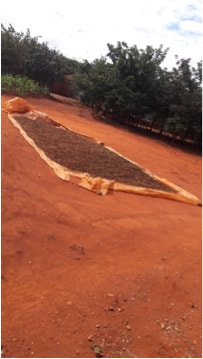Written by CorpsAfrica/Malawi Volunteer Ms. Ireen Kanjala
A wide variety of crops are grown during the hot and wet seasons in Malawi (November to April) and then harvested as well as stored in the cool dry season (May to July). The most commonly grown crops in my community include maize, groundnuts, cassava, and sweet potatoes. The uneven distribution of rain earlier in the season caused moisture stress and resulted in crop wilting – in some cases permanently wilting – and lowering crop yield. Rainfall distribution improved later in the season, benefiting the late-planted crops and late-maturity crops.
Although there’s been an onset of poor rains, local farmers are harvesting their produce and selling it in the local markets. One of the joys of being a Volunteer is eating with the seasons and helping cultivate a more resilient, sustainable food system. When we purchase food that’s in season from local farmers, we’re supporting both local farmers and the local economy. Buying seasonal food from local sources means that the food has spent less shelf life in traveling and in storage, which can significantly cut back on environmental impacts.
It is not only about the crops, but insects too. My favorite seasonal protein source has been the flying termites which are locally known as Ngumbi.Ngumbiis from the termite family and the insect makes homes in anthills. These incredibly delicious insects come out during the rainy season but can be stored for consumption during the dry season. Catching Ngumbi is a unique art, especially if you want to catch more than enough for the whole family. One needs to master how to catch these lazy insects, keeping in mind that you only have one season of rain to get these tasty crunchy proteins.
Flying termite swarms mark the start of termite season. They are mainly attracted to light, which makes catching them in my community even more interesting because of our lack of electricity. Some community members use homemade lamps made from tins, while others trap the flying termites straight on the ant hill.
Flying termites are easy to prepare and preserve. They are dipped in boiling water for less than a minute to help in wing detachment and washing away the excess fat. They are dried in the sun and stored in sacks or containers. They are commonly served with Nsima (hard porridge made from maize meal).
Though the rainy season has come to an end, I have preserved a part of the season’s treats. I am definitely looking forward to the goodies that will come with the cool dry season. Hopefully my little bag of flying termites will get me through until then.

